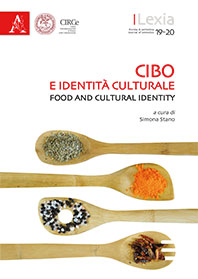Estratto da
LEXIA. RIVISTA DI SEMIOTICA
Cibo e identità culturale | Food and Cultural Identity
Du goût alimentaire au goût esthétique... et retour
LEXIA. RIVISTA DI SEMIOTICA
Cibo e identità culturale | Food and Cultural Identity
Du goût alimentaire au goût esthétique... et retour

ENGLISH TITLE: From Alimentary to Aesthetic Taste… and Return
ABSTRACT: The concept of “taste” is defined in European philosophy—from Aristotle’s analysis—as an objective and universal perception based on the interaction between our mouth and food. Since the seventeenth century, the “taste of the mouth” has become a metaphor for the intuitive knowledge of feelings, which is still considered universal and objective, but also immediate—not requiring any concept or explanation, and applying to fields such as arts and daily life artefacts. The idea of a universal aesthetic taste was dismantled by semiotics, starting from Roland Barthes’ works. A semiotics of food taste should do likewise with “alimentary taste”. In order to be successful, such an operation would require overcoming several problems connected to the physiological and cultural dimension of taste.
KEYWORDS: taste; knowledge; aesthetic; embodied metaphors.
ABSTRACT: The concept of “taste” is defined in European philosophy—from Aristotle’s analysis—as an objective and universal perception based on the interaction between our mouth and food. Since the seventeenth century, the “taste of the mouth” has become a metaphor for the intuitive knowledge of feelings, which is still considered universal and objective, but also immediate—not requiring any concept or explanation, and applying to fields such as arts and daily life artefacts. The idea of a universal aesthetic taste was dismantled by semiotics, starting from Roland Barthes’ works. A semiotics of food taste should do likewise with “alimentary taste”. In order to be successful, such an operation would require overcoming several problems connected to the physiological and cultural dimension of taste.
KEYWORDS: taste; knowledge; aesthetic; embodied metaphors.
| pagine: | 37-47 |
| DOI: | 10.4399/97888548857143 |
| data pubblicazione: | Giugno 2015 |
| editore: | Aracne |








